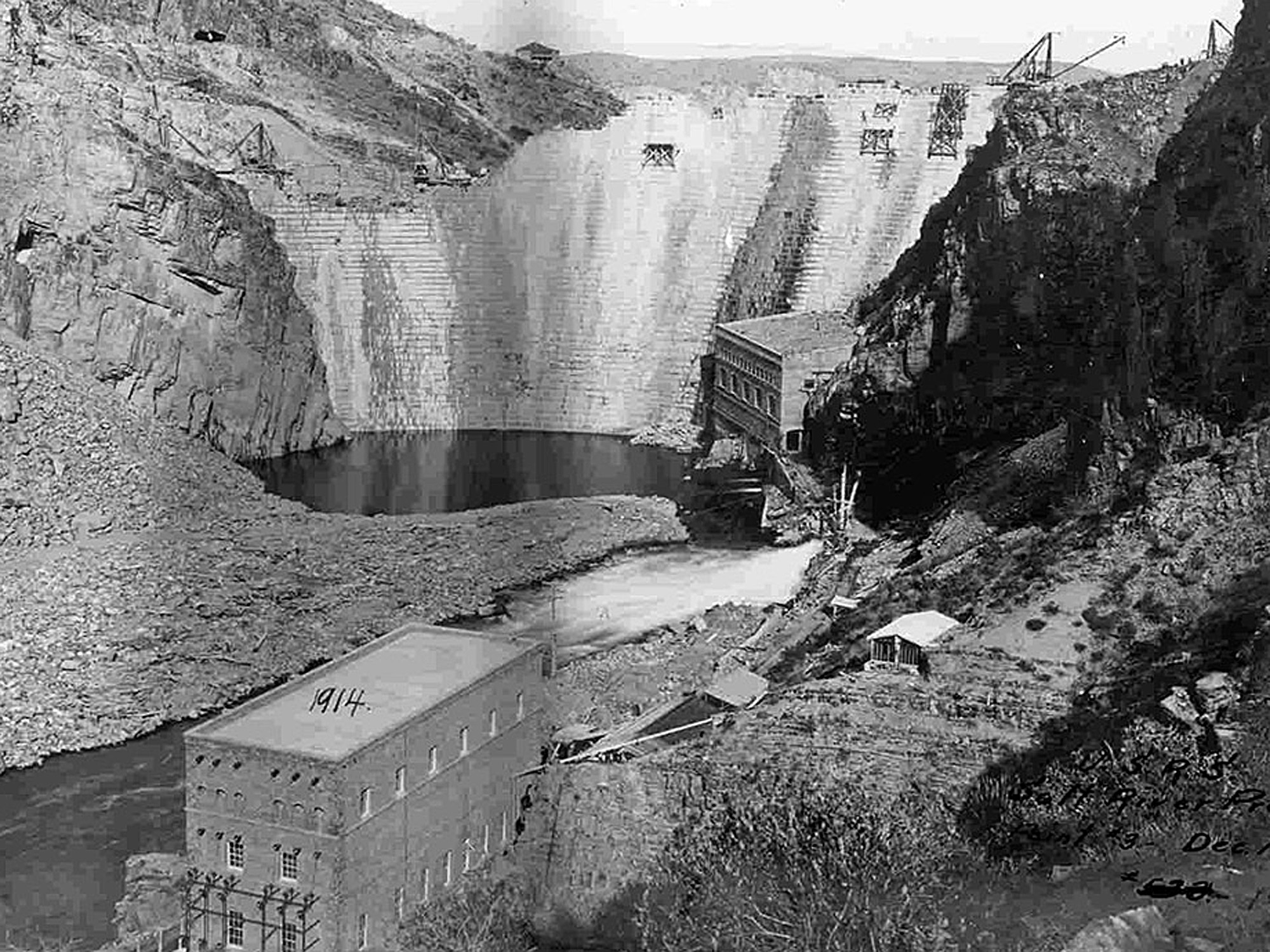On March 18, 1911, under the scorching Arizona sun, President Theodore Roosevelt stood triumphant before a vast crowd, dedicating a monumental feat of engineering: the Roosevelt Dam. Stretching nearly 350 feet across the Salt River northeast of Phoenix, it was the largest dam in the United States at the time, symbolizing a new era of water control and agricultural prosperity for the arid Southwest.
The dam’s story began not with construction, but with vision. President Roosevelt, championing the “New Nationalism” and conservation efforts, saw the potential to transform the American West through controlled water use. The vast, fertile Salt River Valley, however, lacked the consistent water needed for widespread farming. Enter the Roosevelt Dam, a project spearheaded by the Reclamation Service, an agency Roosevelt himself created.
Construction, begun in 1905, was a herculean task. Thousands of laborers, including many Mexican immigrants and Native Americans, battled scorching heat, dangerous conditions, and even dynamite mishaps. Their efforts, however, were fueled by the promise of a brighter future for the region.
Finally, in 1911, with the dam complete and its reservoir filling, Roosevelt arrived for the grand opening. He threw a symbolic switch, sending water coursing through a canal network for the first time. The crowd erupted in cheers, recognizing the dam as a game-changer. This wasn’t just concrete and steel; it was the key to unlocking the potential of the land, transforming parched desert into productive farms and vibrant communities.
The impact was immediate and profound. Water flowed to previously barren lands, enabling the cultivation of a wider variety of crops, from citrus trees to cotton. Towns like Mesa and Chandler experienced dramatic population growth, fueled by the agricultural boom. The dam also provided much-needed hydroelectric power, electrifying homes and businesses across the region.
But the story of the Roosevelt Dam isn’t without its complexities. The project displaced Indigenous communities and relied on cheap, often dangerous, labor. Later concerns arose about environmental impacts downstream, highlighting the need for responsible water management.
Despite these challenges, the Roosevelt Dam remains a landmark achievement. It stands as a testament to human ingenuity, the power of collaboration, and the enduring struggle to manage water resources in a dry land. As Arizona continues to grapple with water scarcity in the 21st century, the legacy of the Roosevelt Dam serves as a reminder of both the transformative power of water and the need for thoughtful stewardship of this precious resource.
Further Points of Interest:
- Explore the cultural impact of the dam, like its role in shaping the identity of the Salt River Valley.
- Discuss the dam’s role in shaping water management policies and the ongoing debate about its environmental impact.
- Highlight the lives of individuals who played pivotal roles in the dam’s construction or benefited from its creation.
By adding these layers, you can create a richer and more nuanced historical portrait of the Roosevelt Dam and its enduring significance.












Syed Husain
Good history of Roosevelt Dam. The younger generation needs to know more about the hard work and vision of previous generations who made this great country what it is today.
Liz
Interesting article but the email picture with the article link is President Franklin Roosevelt instead of President Theodore Roosevelt.
John Ashley
Actually I believe the photo is President Truman
Tom
The picture attached to the article was neither Franklin or Theodore Roosevelt, it is a photo of President Harry S. Truman.